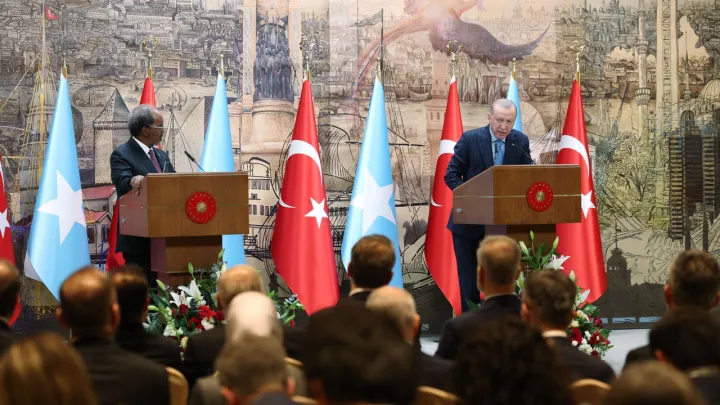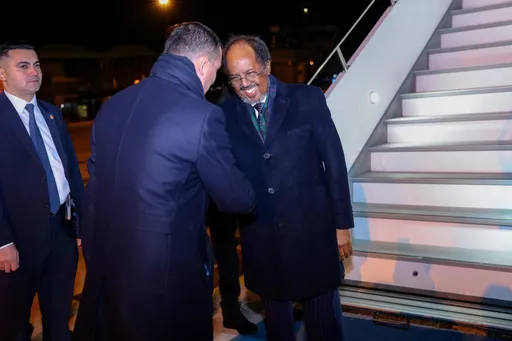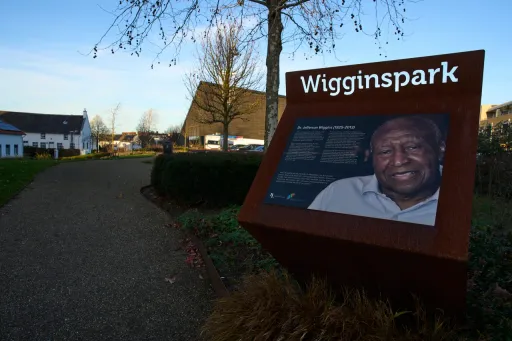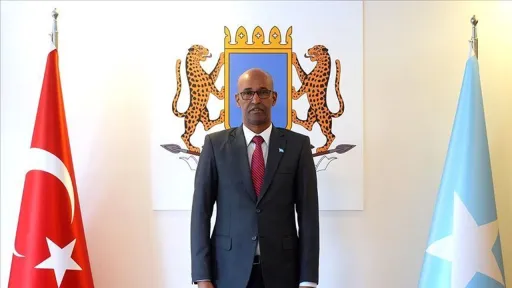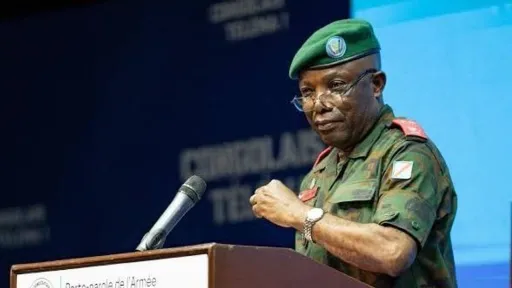Last month, Washington signed a defence pact with the Greek Administration of Southern Cyprus (GASC) drawing concern and criticism in Türkiye. The Cyprus island is divided between the Turkish Republic of Northern Cyprus (TRNC) and the GASC.
The northern and southern divisions followed ethnic tensions in the 1960s that forced Turkish Cypriots to seek refuge in the north of the island. Ankara had intervened to protect the lives and properties of hundreds of thousands of Turks in Cyprus, where a Greek military junta was trying to exert complete control.
It was this same conflict that saw the US abandon Türkiye, its NATO ally. Instead of coming to its rescue, the US imposed an arms embargo on Türkiye, cutting it off from the supply line of vital arms and ammunition.
The Johnson Letter, sent by US President Lyndon B Johnson to Turkish Prime Minister Ismet Inonu in 1964, warned Türkiye against military intervention in Cyprus. Its harsh tone left a lasting mark on Turkish foreign policy, sowing distrust. The arms embargo that followed Türkiye’s intervention in 1974 underscored its reliance on foreign suppliers and the vulnerabilities this dependency entailed.
“This was a wake-up call,” says Veysel Kurt, Associate Professor at Istanbul Medeniyet University and co-author of 'The Development of the Turkish Defence Industry'. “The response not only shook Türkiye's confidence in the US but also revealed the need to reach the capacity to meet its own needs in the defence industry,” Kurt adds.
Over the following decades, Türkiye moved from importing defence equipment to manufacturing advanced weaponry at home. The push for self-sufficiency accelerated in the last 20 years under President Recep Tayyip Erdogan.
At the turn of the century, Türkiye relied on imports for 80 percent of its defence needs. Today, that figure has dropped to 20 percent.
In some areas, particularly in armed drones, Türkiye has become a global leader. Defence exports, which stood at $248 million in 2002, reached $4.39 billion in 2022, including sales of drones, armoured vehicles, and frigates. The budget for 2024 will be two and half times more than the previous year, the Turkish government has indicated.
Several factors have driven Türkiye’s focus on defence, according to Kurt. “Political leadership, collaboration between the public and private sectors, and investment in R&D have all played major roles,” Kurt says. “But the most important factor is the decisiveness of the political leadership.”
A reaction to a changing order
Türkiye’s focus on building domestic defence capacity in the past two decades coincides with the challenges it has faced along its eastern borders and the wider region. It also happened at a time when its Western allies let it down.
For instance, the Bayraktar armed drones attained prominence after they were used against terrorists in Syria during Operation Olive Branch.
Kurt says popular uprisings in the Middle East in 2011, the Syrian civil war, cross-border terrorism, and the US support for PKK/YPG terrorists in Syria are among the factors that shaped Ankara’s defence industry outlook.
Although Türkiye’s NATO allies provided it with weapons, they often withheld key technologies and obstructed the sale of critical components.
“This is the main reason for Türkiye's search for alternatives, especially in strategic weapon systems. For example, the air defence system negotiations with China in 2012 and the procurement of S-400s from Russia in 2017,” says Kurt.
“The failed coup attempt on July 15, 2016, and the US’s refusal to cooperate with Türkiye on addressing the FETO threat further solidified the country’s shift toward a more independent political trajectory.”
Before Türkiye started on the road to self-reliance, it had closely aligned with the Western allies. At times, this worked against its own interests.
A long transformation
Türkiye’s shift toward defence independence is a far cry from its post-World War II policies. After joining NATO in 1952, Türkiye relied heavily on its Western allies for military equipment, relegating itself to the role of a consumer.
“Its accession to NATO in 1952 established foreign actors as its primary defence suppliers, relegating Türkiye to the role of a consumer,” says Kurt. “This meant Ankara was spending a substantial chunk of its budget on buying weapons from other countries up till the 1990s”, he says.
This arrangement came under strain following the Cyprus crisis. In response, Türkiye founded Turkish Aerospace Industries (TAI) in 1973 and ASELSAN in 1975 to institutionalise its defence sector.
However, political instability, military coups, and economic crises in the following decades slowed progress. Under Erdogan, Türkiye’s defence strategy has changed dramatically.
Key defence bodies, including the Defence Industry Council and the Presidency of Defence Industries, now report directly to the president, underscoring the importance Ankara places on this sector.
"The current political leadership views the domestic and national character of the defence industry as a strategic priority, not just a tactical one,” says Kurt.
➤ Click here to follow our WhatsApp channel for more stories.


